
NOTE: I wrote this article (which is now incorporated as Chapter 20 of In the Footsteps of Dracula: A Personal Journey and Travel Guide, 3rd Edition) on New Orleans as an homage to one of my favorite cities, one still fresh in my mind and heart after a long-postponed revisit there as an invitee to the Vampire Film Festival’s Midsummer Nightmare last year.
All of the photos in this article are my own, except for the portrait of the Compte de St. Germain and the two pictures otherwise credited. Most of the text is a compendium of others’ words and research. With apologies to anyone I may have inadvertently left out, my online research for this chapter led me to articles from hubpages.com; Kalila K. Smith (whose Vampire Tour I can recommend from personal experience—see http://www.zoominfo.com/p/Kalila-Smith/178024410); New Orleans Ghosts.com; GO NOLA; Brian Harrison; Haunted Shreveport Bossier.com; and Frommers.com. I’ve borrowed freely from all of these sources and recommend them highly to those who would like to delve more deeply into the secrets of this unique city.

If you have ever walked the dark, rainy streets of the French Quarter at night, you have seen the voodoo shops selling their gris-gris and John-the-Conqueror Root. You’ve seen the old woman in the French Market whose pointing finger foretells your death And if you know the right person to ask and you ask in the right way, you’ll be shown to the vampire clubs.
I’ve been in those clubs and seen people who believe with their heart, body, and soul that they are real, live vampires. And some of the people in those clubs are scared to death of a select group of vampires who have only appeared there a few times, and always in the darkest of night. By day, of course, the vampire clubs are closed and locked or turned back into regular tourist bars . . .
–Crazy Horse’s Ghost

St. Louis Cemetery (Photo Courtesy of David Yeagley)
Like the Spanish Moss that drapes the trees of the nearby bayous, mystery and the occult have shrouded New Orleans since its birth. For hundreds of years, families there have practiced a custom called “sitting up with the dead.” When a family member dies, a relative or close family friend stays with the body until it is placed into one of New Orleans’ above-ground tombs or is buried. The body is never left unattended.
There are many reasons given for this practice today—the Old Families will tell you it’s simply respect for the dead—but this tradition actually dates back to the vampire folklore of medieval Eastern Europe. First, the mirrors are covered and the clocks are stopped. While sitting up with the deceased, the friend or family member is really watching for signs of paranormal activity, e.g.,. if a cat is seen to jump over, walk across, or stand on top of the coffin; if a dog barks or growls at the coffin; or if a horse shies from it, these are all signs of impending vampirism. Likewise, if a shadow falls over the corpse. At that point, steps are taken to prevent the corpse from returning from the dead.
Ways to stop a corpse—especially a suicide—from becoming a vampire include burying it face down at a crossroads. Often family members place a sickle around the neck to keep the corpse from sitting up; stuff the mouth with garlic and sew it closed; or mutilate the body, usually by decapitating the head and placing it at the bottom of the feet. But the most common remedy for impending vampirism is to drive a stake into the corpse, decapitate it, then burn the body to ashes. This method is still believed to be the only sure way to truly destroy the undead.
THE CASKET GIRLS

Ask any member of the Old Families who the first vampires to come to New Orleans were, and they’ll tell you the same: it was the Casket Girls.
Much of the population that found their way to New Orleans in the early 1700s were unwelcome anywhere else: deported galley slaves and felons, trappers, gold-hunters and petty criminals. People who wouldn’t be noticed if they went missing.
Sources vary on the specifics, but the basic story is that the city’s founders asked French officials to send over prospective wives for the colonists. They obliged and after months at sea these young girls showed up on the docks, pale and gaunt, bearing only as many belongings as would fit inside a wooden chest or “casquette,” which appears to have been the 18th Century equivalent of an overnight bag. They were taken to the Ursuline Convent, which still stands today, where the girls were said to have resided until the nuns could arrange for marriages.
Some accounts say they were fine young women, virgins brought up in church-run orphanages; some say they were prostitutes. But there are many who swear they were vampires, vampires who continue to rise from their “casquettes” on the third floor to break through the windows and hurricane shutters—windows and shutters that always seem to need repairing after the calmest of nights—to feed upon the transient crowds that for centuries have filled the darkened alleys of the Quarter.
Finally in 1978, after centuries of rumors and stories, two amateur reporters demanded to see these coffins. The archbishop, of course, denied them entrance. Undaunted, the next night the two men climbed over the convent wall with their recording equipment and set up their workstation below. The next morning, the reporters’ equipment was found strewn about the lawn. And on the front porch steps of the convent were found the almost decapitated bodies of these two men. Eighty percent of their blood was gone. To this day, no one has ever solved the murders.
LE COMPTE DE ST. GERMAIN

If there is one person who encapsulates the lure and the danger of the vampire, it is the Compte de Saint Germain. Making his first appearance in the court of Louis XV of France, the Comte de Saint Germain endeared himself to the aristocrats by regaling them with events from his past. An alchemist by trade, he claimed to be in possession of the “elixir of life,” and to be more than 6,000 years old.
At other times the Count claimed to be a son of Francis II Rakoczi, the Prince of Transylvania, born in 1712, possibly legitimate, possibly by Duchess Violante Beatrice of Bavaria. This would account for his wealth and fine education. It also explains why kings would accept him as one of their own.
Contemporary accounts from the time record that despite being in the midst of many banquets and invited to the finest homes, he never ate at any of them. He would, however, sip at a glass of red wine. After a few years, he left the French court and moved to Germany, where he was reported to have died. However, people continued to spot him throughout Europe even after his death.
In 1903, a handsome and charismatic young Frenchman named Jacques Saint Germain, claiming to be a descendant of the Compte, arrived in New Orleans, taking residence in a house at the corner of Royal and Ursuline streets. Possessing an eye for beauty, Jacques was seen on the streets of the French Quarter with a different young woman on his arm every evening. His excursions came to an abrupt end one cold December night, when a woman’s piercing scream was heard coming from Jacques’ French Quarter home. The scream was quickly followed by a woman who flung herself from the second story window to land on the street below. As bystanders rushed to her aid, she told them how Saint Germain attacked and bit her, and that she jumped out of the window to escape. She died later that evening at Charity Hospital in New Orleans.
By the time the New Orleans police kicked in the door of Saint Germain’s home, he had escaped. However, what they did find was disturbing enough. The stench of death greeted the nostrils of the policemen, who found not only large bloodstains in the wooden flooring, but even wine bottles filled with human blood. The house was declared a crime scene and sealed off. From that evil night to the present day, no one has lived in that home in the French Quarter. It is private property and all taxes have been paid to date, but no one has been able to contact the present owner or owners. The only barriers between the valuable French Quarter property and the outside world are the boarded-up balcony windows and a small lock on the door. Whispers of Jacques sightings are prevalent, and people still report seeing him in the French Quarter. Could it be the enigmatic Compte checking up on his property?
ANNE RICE AND THE VAMPIRE CHRONICLES

Lafayette Cemetery (Photo Courtesy of Phil Orgeron)
There is no one who has done more to bring the vampire into the New Age than Anne Rice, born and bred in New Orleans, with her novel Interview with the Vampire and the films and books that followed. Those who have profited mightily from the popularity of True Blood and Twilight owe her a great debt.
The ultra-retro St. Charles Avenue Streetcar will take you close to Lafayette Cemetery No. 1, the gravesite of Louis de Pointe du Lac’s (Lestat’s companion and fellow vampire in Rice’s The Vampire Chronicles) wife and child and where Louis was turned into a vampire by Lestat.
The Styrofoam tomb from the film Interview with the Vampire is gone now, but you can easily find the site where it stood, the wide empty space in the cemetery nearest the corner of Coliseum and Sixth Street.
During the filming of Interview with the Vampire, the blocks between 700 and 900 Royal Street in the French Quarter were used for exterior shots of the home of the vampires Louis, Lestat, and Claudia, trapped for all time with an adult mind in the body of a six-year-old girl. In fact, the streets there and around Jackson Square were covered in mud for the movie as they had been in the 1860s when the scenes took place.
The perfectly preserved Gallier House at 1132 Royal Street was Anne Rice’s inspiration for the vampires’ house, and very close to that is the Lalaurie House, at 1140 Royal Street. Delphine Lalaurie, portrayed by Kathy Bates in American Horror Story: Coven, was a real person who lived in that house and was indeed said to have tortured and bathed in the blood of her slaves—even the blood of a slave girl’s newborn baby—to preserve her youth. She was never seen again in New Orleans after an angry mob partially destroyed her home on April 10, 1834. There is a scene in American Horror Story where Delphine escapes from the coven’s mansion and sits dejectedly on the curb in front of her old home. A private residence now, some locals still swear that the Lalaurie House is haunted, and that the clanking of chains can be heard through the night.
Built in 1789, Madame John’s Legacy (632 Dumaine Street) is the oldest surviving residence in the Mississippi Valley. In Interview with the Vampire, caskets are shown being carried out of the house as Louis’ (Brad Pitt) voice-over describes the handiwork of his housemates Claudia and Lestat: “An infant prodigy with a lust for killing that matched his own. Together, they finished off whole families.”
RESOURCES FOR VAMPIRES

As a service to this most vampire-friendly city (http://www.vampirewebsite.net/vampirefriendlycities.html), the New Orleans Vampire Association describes itself as a “non-profit organization comprised of self-identifying vampires representing an alliance between Houses within the Community in the Greater New Orleans Area. Founded in 2005, NOVA was established to provide support and structure for the vampire and other-kin subcultures and to provide educational and charitable outreach to those in need.”
Their Web site also points out that “every year since Hurricane Katrina, the founding members of NOVA have taken food out on Easter, Thanksgiving, and Christmas to those who are hungry and homeless.” (See http://www.neworleansvampireassociation.org/index.html.)
FANGTASIA, named with permission from HBO after the club featured in True Blood, is an affiliation of New Orleans-based musicians and film and TV producers who for three years have presented a multi-day vampire-centric event of the same name, the first two years at 1135 Decatur and last year at the Howlin’ Wolf. You can follow their plans and exploits via their blog at http://www.fangtasiaevent.com/fangtasia-blog/.
Next year FANGTASIA hopes to create “the South by Southwest of Global Vampire Culture” at an as yet undisclosed location in Greater New Orleans. As they describe it:
Moving beyond this third consecutive year, FANGTASIA is building a broader international draw that will bring fans to not only party at club nights, but also attend conferences, elegant fashion shows, film & TV screenings, celebrity events as well as an international Halloween/party gear buyers’ market.
Participants will experience gourmet sensations, explore our sensuous city and haunted bayous… as well as epically celebrate the Global Vampire Culture in all its sultry, seductive, diverse and darkly divine incarnations. Additionally, FANGTASIA is strategically poised months prior to Halloween to provide corporate sponsors and vendors a perfect window to connect with their core demographic. This also allows FANGTASIA to actively support and promote existing major Halloween events in New Orleans and beyond.
On the subject of vampiric Halloween events, for 25 years the Anne Rice Vampire Lestat Fan Club (http://arvlfc.com/index.html) has presented the annual Vampire Ball (http://arvlfc.com/ball.html), now as part of the four-day UndeadCon (http://arvlfc.com/undeadcon.html) at the end of October; and on the weekend nearest Halloween Night (for example, November 1, 2014) the Endless Night Festival and New Orleans Vampire Ball takes place at the House of Blues (http://www.endlessnight.com/venue/).

The Boutique du Vampyre (http://feelthebite.com/boutique2013.html) is a moveable (literally—they’re known to change locations on short notice) feast of vampire and Goth-related odds and ends, many of them locally made. There are books as well—you may even find a copy of In the Footsteps of Dracula: A Personal Journey and Travel Guide if they’re not sold out. Their Web site itself holds a surprise treat: a link to a free video cast of the first two seasons of Vampire Mob (http://vampiremob.com/Vampire_Mob/Vampire_Mob.html), which is just what the title implies.
Finally, no visit to the Crescent City would be complete, for Vampire and Mortal alike, without a taste of absinthe (http://www.piratesalleycafe.com/absinthe.html), or even more than a taste. There is a ritual to the preparation and serving of absinthe that should not be missed; one of the sites that does this authentically is the Pirates Alley Café and Absinthe House at 622 Pirates Alley.
***
Steven P. Unger is the best-selling author of In the Footsteps of Dracula: A Personal Journey and Travel Guide, 3rd Edition, published and distributed by World Audience Publishers (http://www.amazon.com/Footsteps-Dracula-Personal-Journey-Travel/dp/1935444530/ref=sr_1_1?ie=UTF8&s=books&qid=1262485478&sr=1-1). The 3rd Edition of In the Footsteps of Dracula: A Personal Journey and Travel Guide, available now, includes:
- References, Web Links, and Costs Updated to March 2014
- The First Review of Dracula Ever Written, Published in the Manchester Guardian on June 15, 1897
- A New Section on Bram Stoker’s Dublin
- A Rare Photo of a Wolf-Dragon, the Original Source of the Name “Dracula,” Carved Within the Ruins of a Prehistoric Dacian Temple in Transylvania
- A Brand New Chapter: “A Vampire’s Guide to New Orleans”
- And much, much more!

In the Footsteps of Dracula can be ordered from your local bookstore or online.
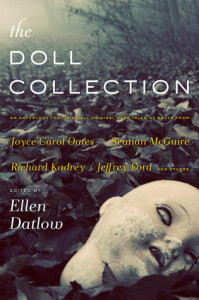
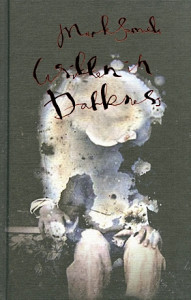
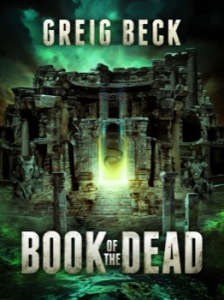

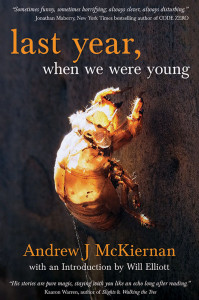 Last Year, When We Were Young
Last Year, When We Were Young








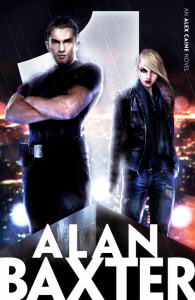
 Geoff Brown is an Australian writer raised in Melbourne’s gritty Western Suburbs. He writes as GN Braun. He is a trained nurse, and holds a Cert. IV in Professional Writing and Editing, as well as a Dip. Arts (Professional Writing and Editing). He writes fiction across various genres, and is the author of many published short stories. He has had numerous articles published in newspapers, both regional and metropolitan. He is the past president of the Australian Horror Writers Association and past director of the Australian Shadows Awards. He is an editor and columnist for UK site This is Horror, and the guest editor for Midnight Echo #9. His memoir, Hammered, was released in early 2012 by Legumeman Books. He is the owner of Cohesion Editing and Proofreading, and has now opened a publishing house, Cohesion Press.
Geoff Brown is an Australian writer raised in Melbourne’s gritty Western Suburbs. He writes as GN Braun. He is a trained nurse, and holds a Cert. IV in Professional Writing and Editing, as well as a Dip. Arts (Professional Writing and Editing). He writes fiction across various genres, and is the author of many published short stories. He has had numerous articles published in newspapers, both regional and metropolitan. He is the past president of the Australian Horror Writers Association and past director of the Australian Shadows Awards. He is an editor and columnist for UK site This is Horror, and the guest editor for Midnight Echo #9. His memoir, Hammered, was released in early 2012 by Legumeman Books. He is the owner of Cohesion Editing and Proofreading, and has now opened a publishing house, Cohesion Press.